
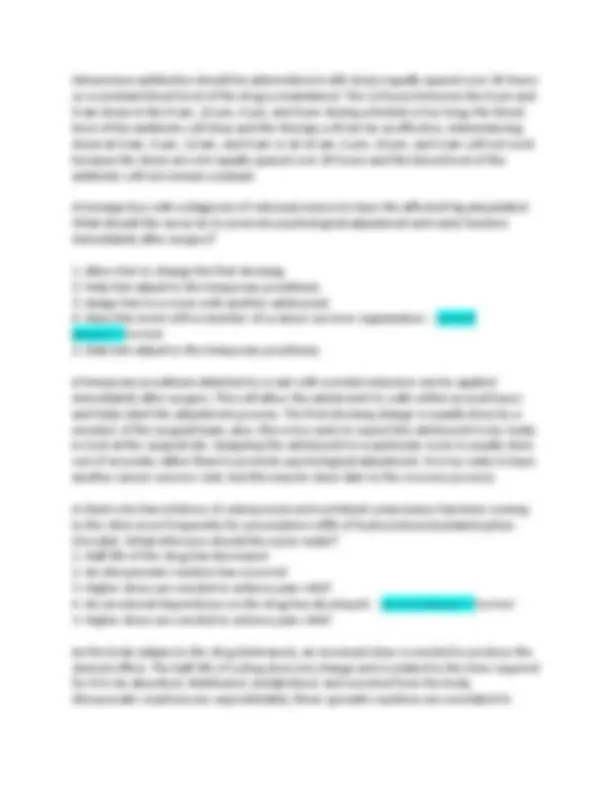
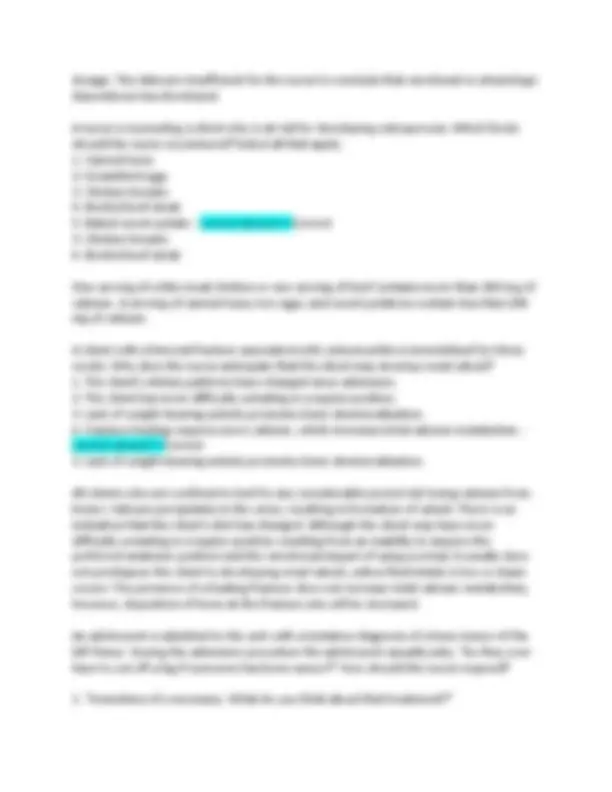
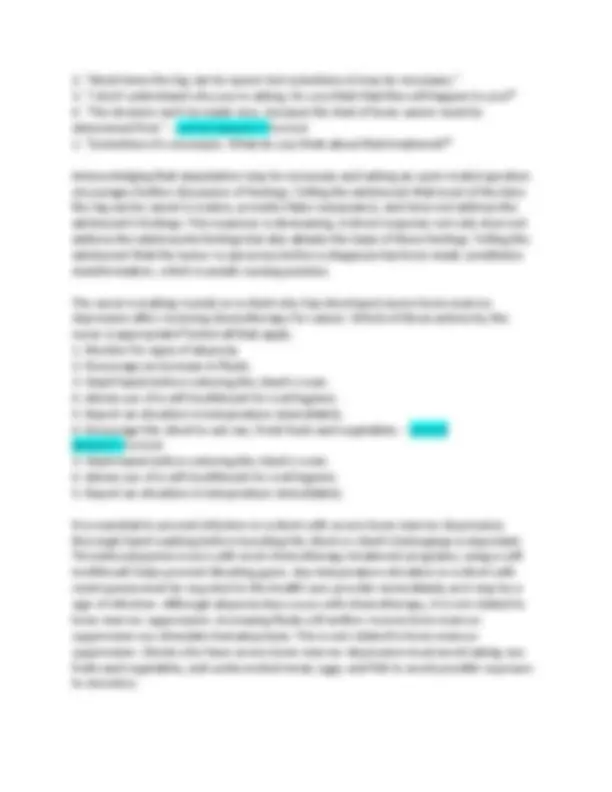
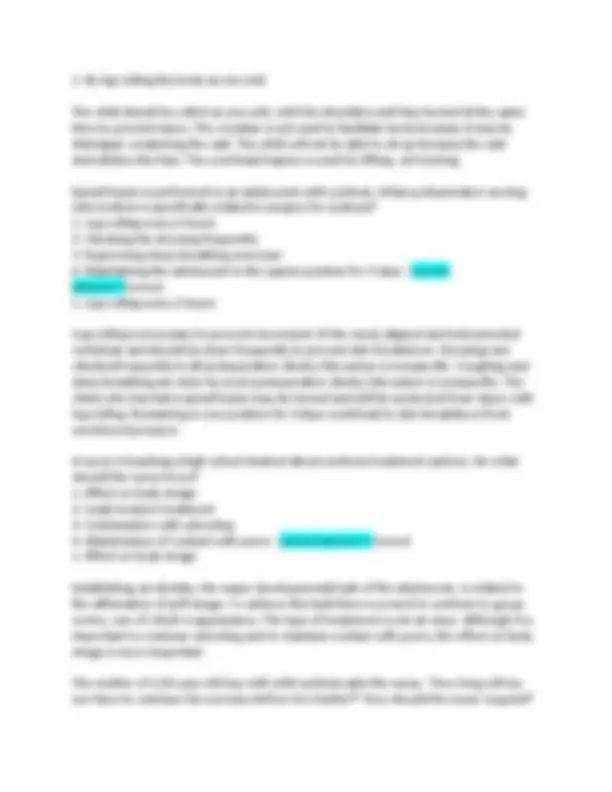
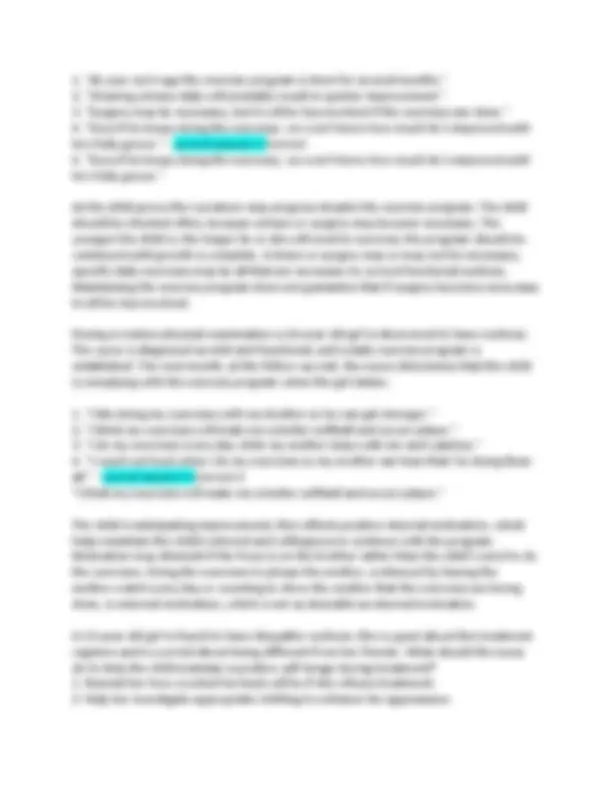
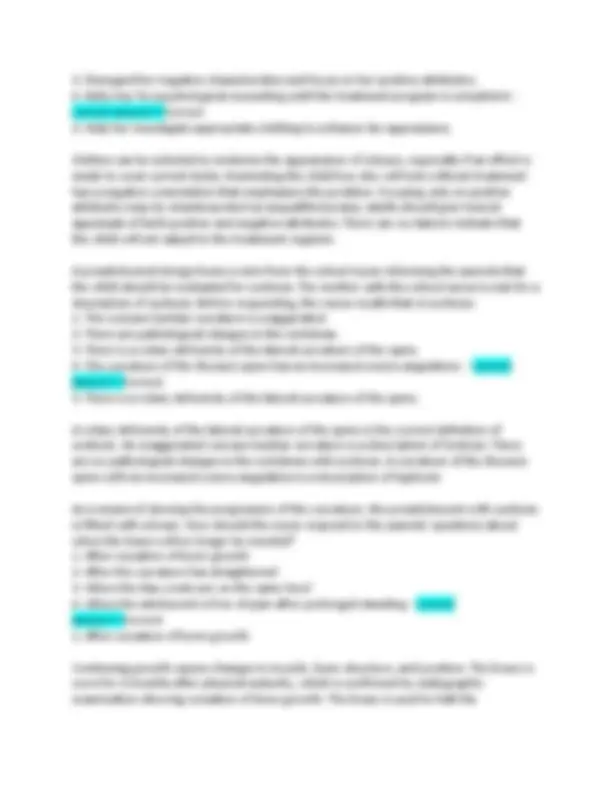
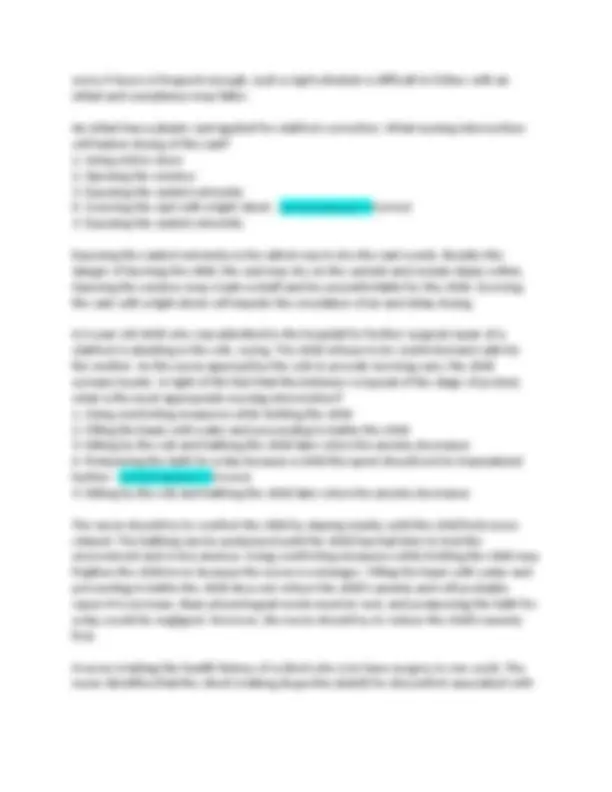
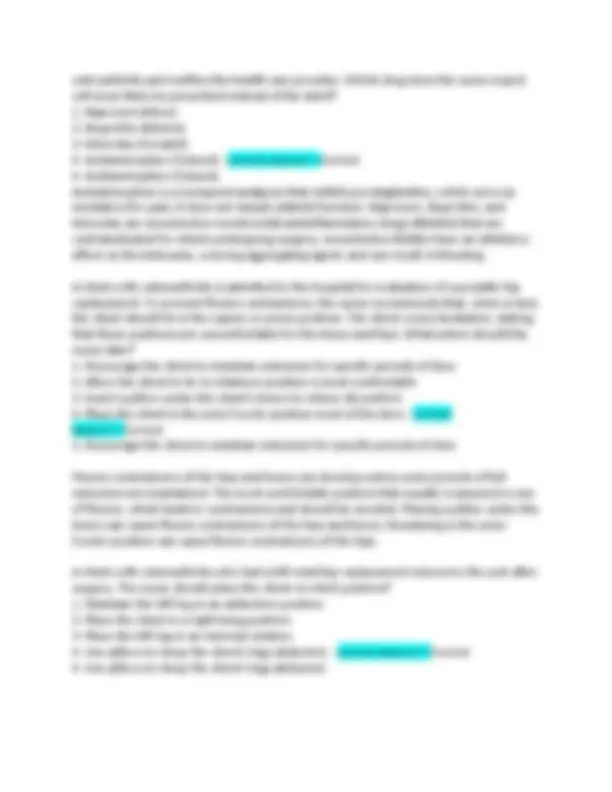
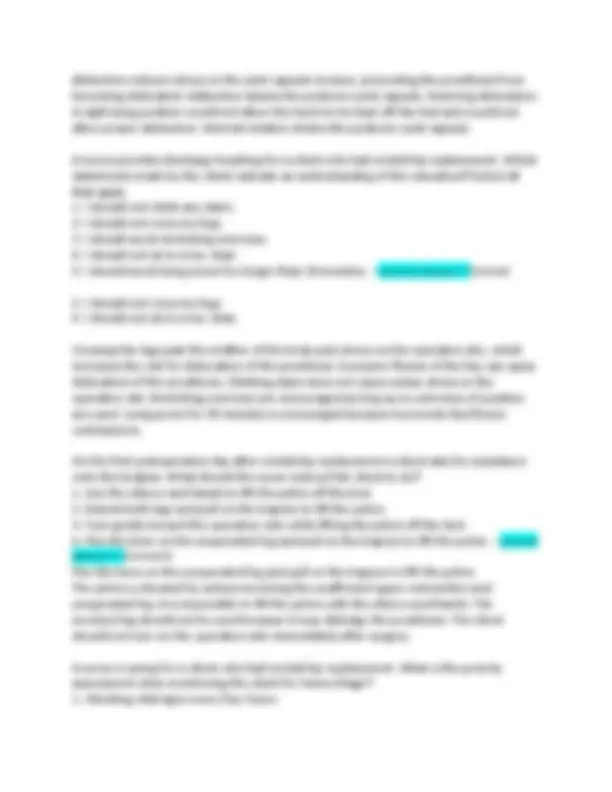
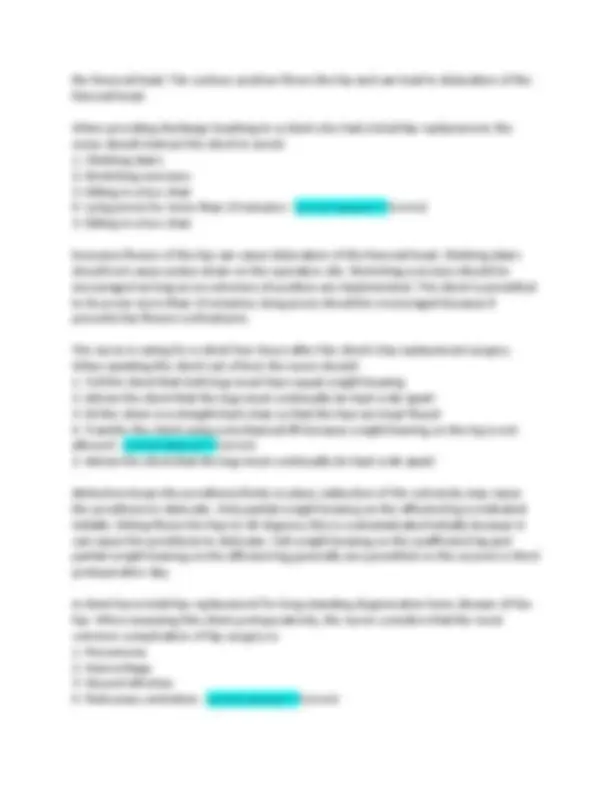
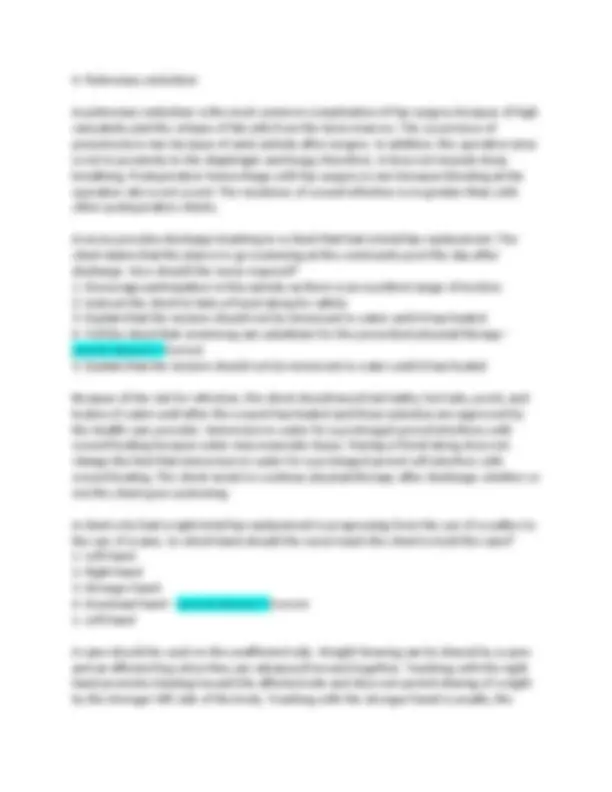
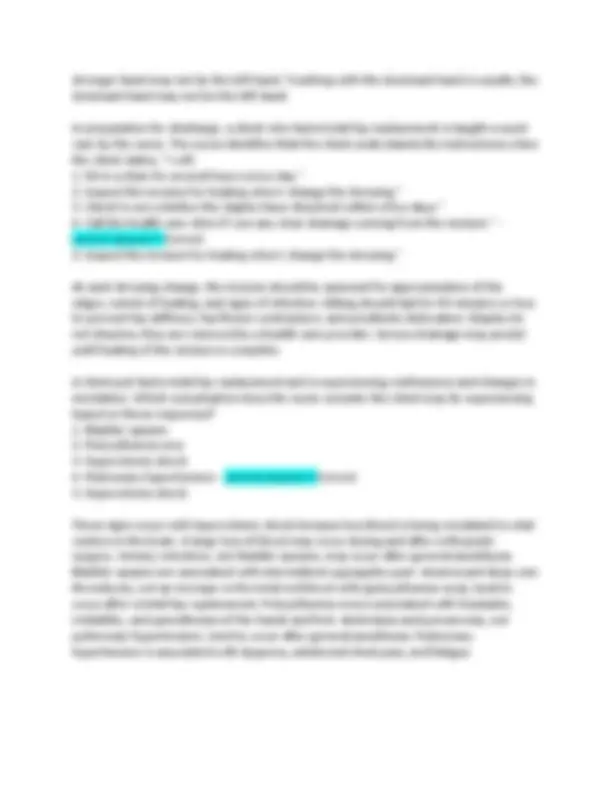
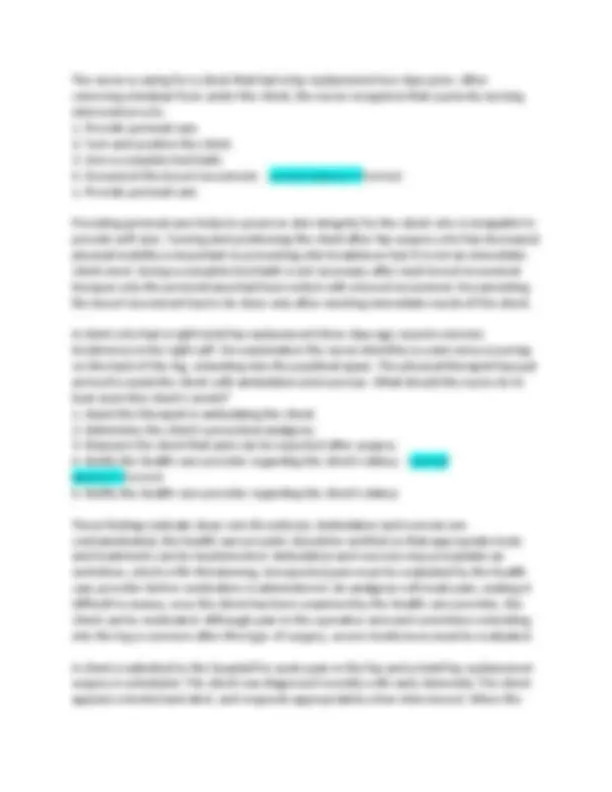
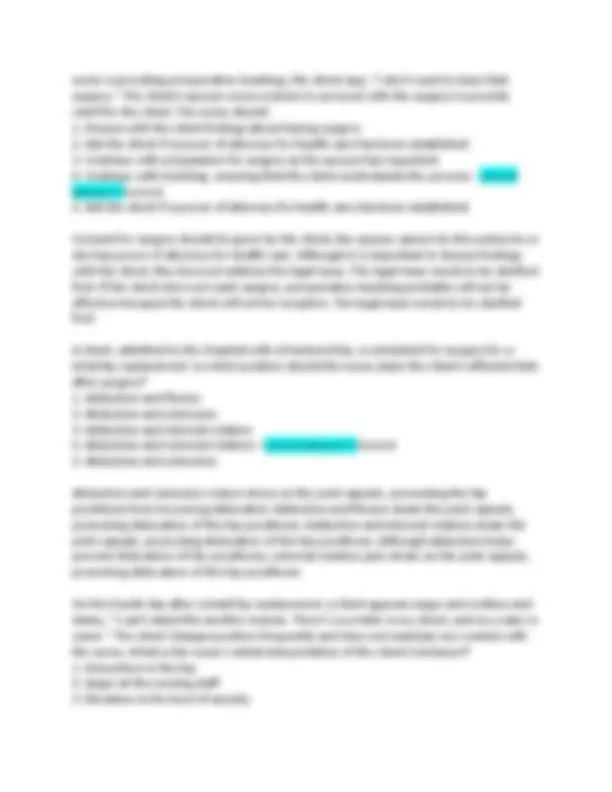
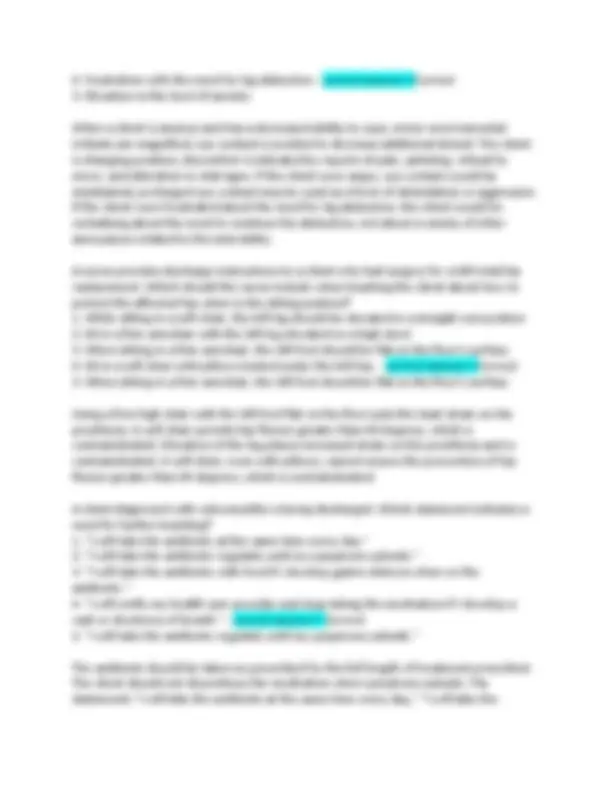
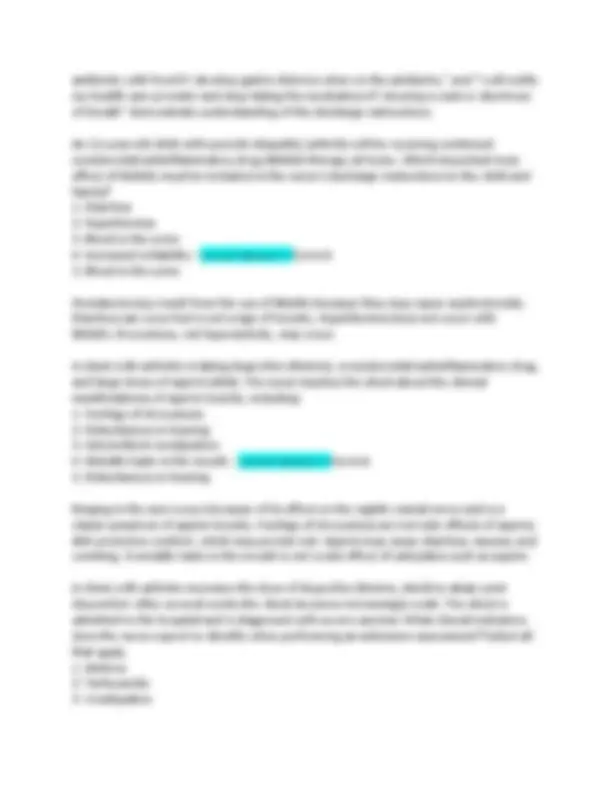
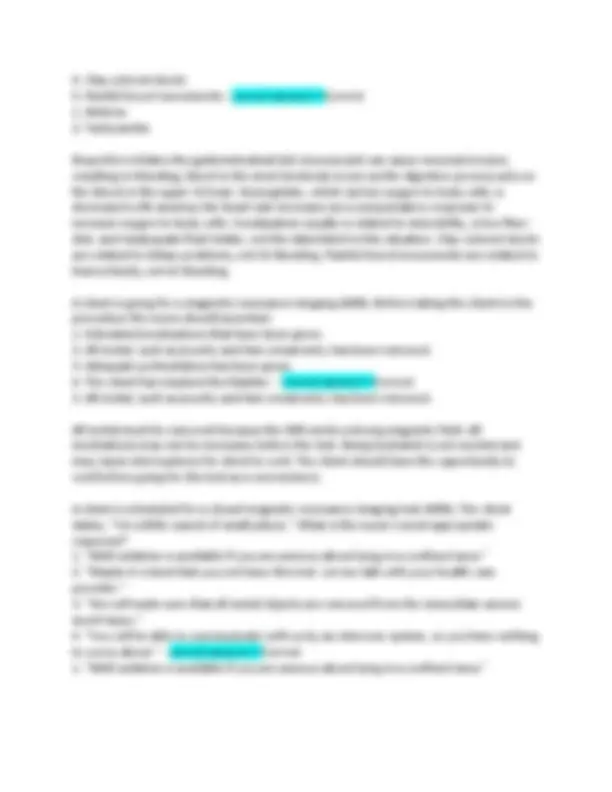
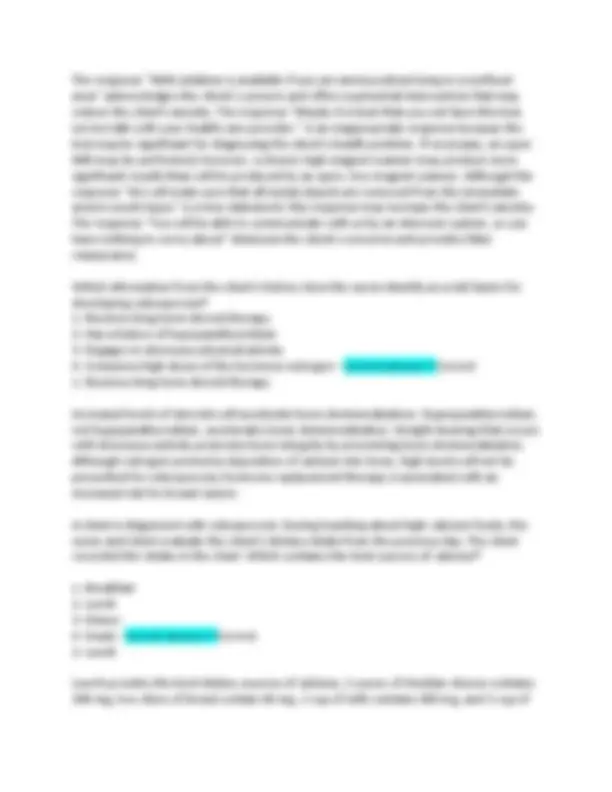
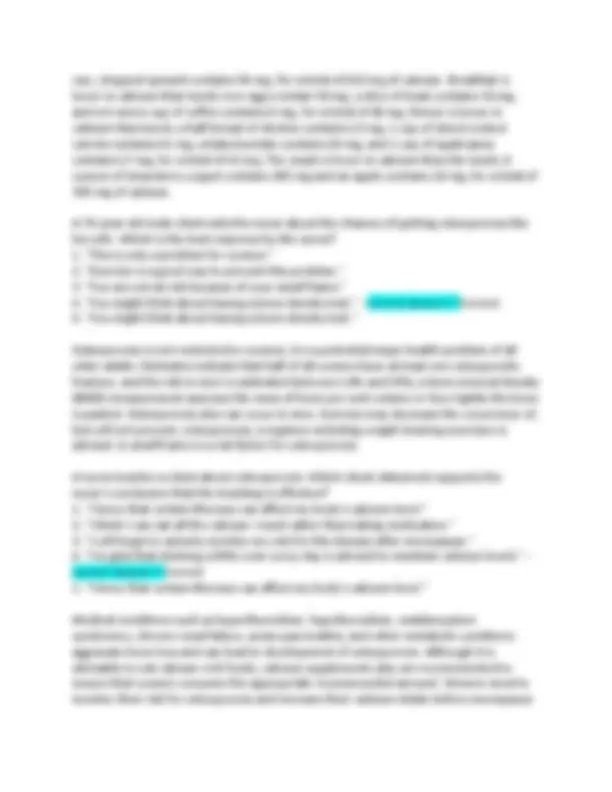
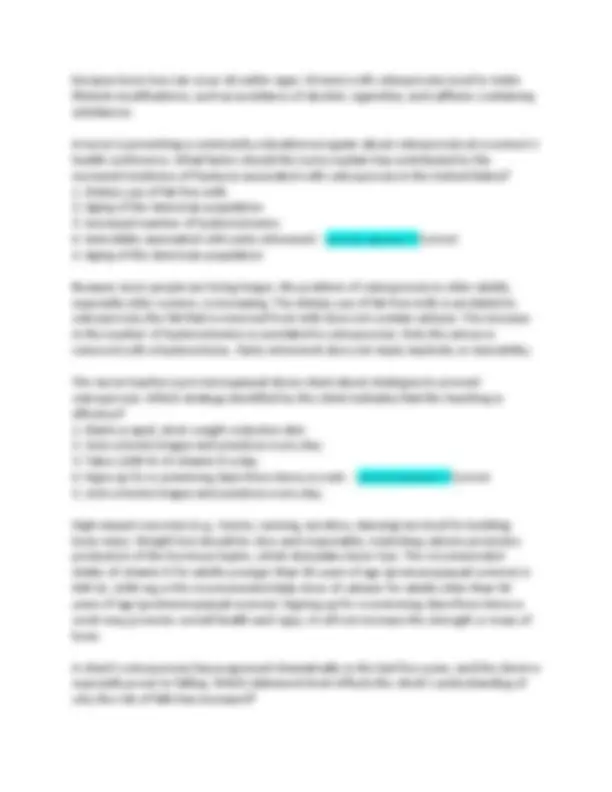
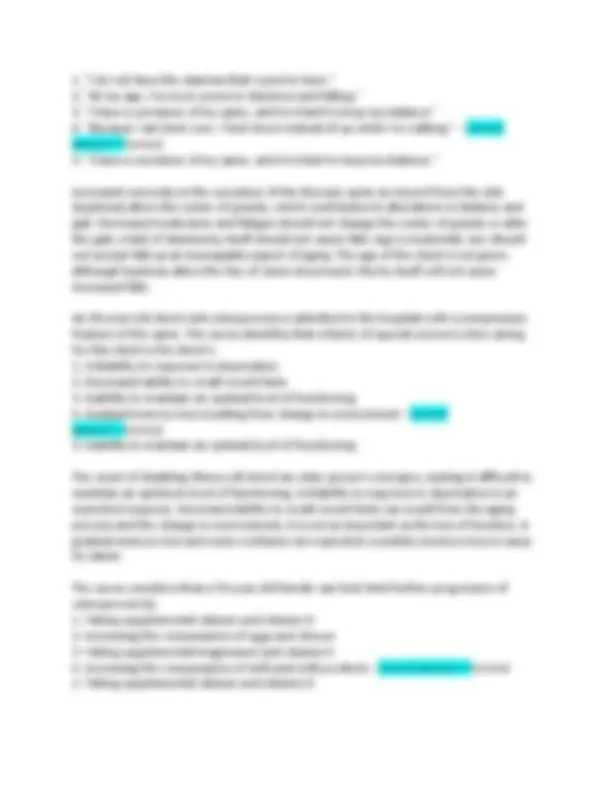
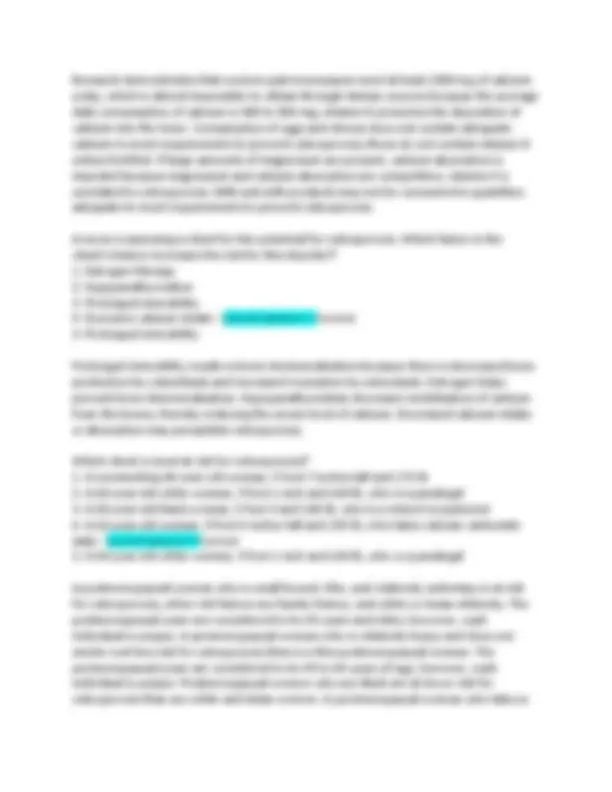
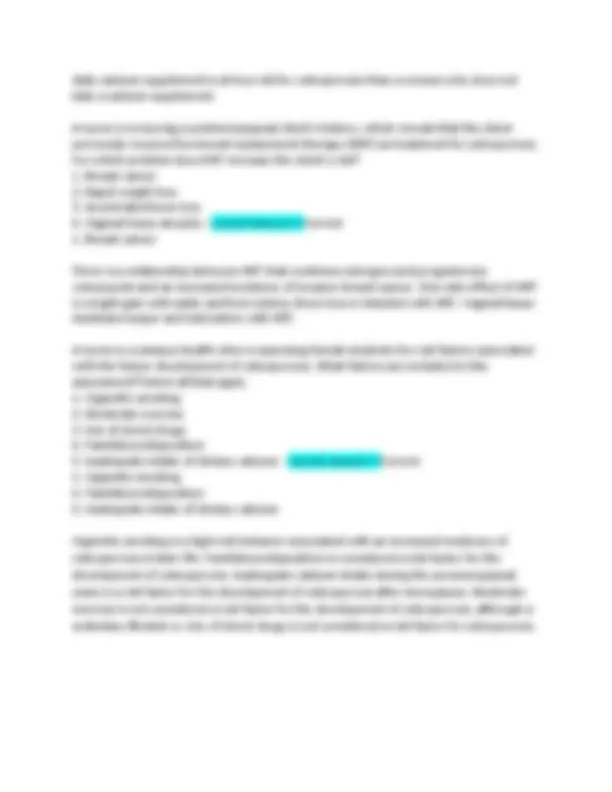


Study with the several resources on Docsity

Earn points by helping other students or get them with a premium plan


Prepare for your exams
Study with the several resources on Docsity

Earn points to download
Earn points by helping other students or get them with a premium plan
Community
Ask the community for help and clear up your study doubts
Discover the best universities in your country according to Docsity users
Free resources
Download our free guides on studying techniques, anxiety management strategies, and thesis advice from Docsity tutors
A nurse is assessing a client with the diagnosis of osteoporosis. What part of the client's body should the nurse assess to identify osteoporotic changes? 1. Long bones 2. Facial bones 3. Vertebral column 4. Joints of the hands - correct answer>>Correct 3. Vertebral column Compression fractures of the vertebrae are the most common fractures in clients with osteoporosis; a gradual collapse of vertebrae may be asymptomatic and observed as kyphosis. Changes in the long bones, associated with osteoporosis, are not observable to the naked eye. Changes in the facial bones, associated with osteoporosis, are not observable to the naked eye. Observable changes, such as inflammation in the joints and natural alignment of the bones, are associated with arthritis, not osteoporosis. A practitioner recommends that an adolescent with the diagnosis of osteogenic sarcoma
Typology: Exams
1 / 31

This page cannot be seen from the preview
Don't miss anything!
























A nurse is assessing a client with the diagnosis of osteoporosis. What part of the client's body should the nurse assess to identify osteoporotic changes?
dosage. The data are insufficient for the nurse to conclude that emotional or physiologic dependence has developed. A nurse is counseling a client who is at risk for developing osteoporosis. Which foods should the nurse recommend? Select all that apply.
can be managed easily with lotion or oil. Some degree of discomfort is expected after cast application. A nurse is teaching a mother how to care for her toddler who is in a spica cast. In what position should the nurse suggest that the mother place the toddler during a feeding?
progression of the curvature, not correct it. When the iliac crests are at the same level is not an appropriate criterion for removal of the brace. Pain is not usually a symptom of scoliosis. A 14-year-old girl in whom scoliosis has been diagnosed undergoes spinal fusion. On the first postoperative day her face is red, she is rigid, and she is crying because she is in pain. She has prescriptions for morphine sulfate for severe pain and an acetaminophen- codeine compound for moderate pain. What information should influence the nurse's choice of analgesic?
every 4 hours is frequent enough, such a rigid schedule is difficult to follow with an infant and compliance may falter. An infant has a plaster cast applied for clubfoot correction. What nursing intervention will hasten drying of the cast?
osteoarthritis and notifies the health care provider. Which drug does the nurse expect will most likely be prescribed instead of the Advil?
Naproxen (Aleve)
Ibuprofen (Motrin)
Ketorolac (Toradol)
Acetaminophen (Tylenol) - correct answer>>Correct
Acetaminophen (Tylenol) Acetaminophen is a nonopioid analgesic that inhibits prostaglandins, which serve as mediators for pain; it does not impact platelet function. Naproxen, ibuprofen, and ketorolac are nonselective nonsteroidal antiinflammatory drugs (NSAIDs) that are contraindicated for clients undergoing surgery; nonselective NSAIDs have an inhibitory effect on thromboxane, a strong aggregating agent, and can result in bleeding. A client with osteoarthritis is admitted to the hospital for evaluation of a possible hip replacement. To prevent flexion contractures, the nurse recommends that, when in bed, the client should lie in the supine or prone position. The client voices hesitation, stating that these positions are uncomfortable for the knees and hips. What action should the nurse take?
Encourage the client to maintain extension for specific periods of time
Allow the client to lie in whatever position is most comfortable
Insert a pillow under the client's knees to relieve discomfort
Place the client in the semi-Fowler position most of the time - correct answer>>Correct
Encourage the client to maintain extension for specific periods of time Flexion contractures of the hips and knees can develop unless some periods of full extension are maintained. The most comfortable position that usually is assumed is one of flexion, which leads to contractures and should be avoided. Placing a pillow under the knees can cause flexion contractures of the hips and knees. Remaining in the semi- Fowler position can cause flexion contractures of the hips. A client with osteoarthritis who had a left total hip replacement returns to the unit after surgery. The nurse should place the client in which position?
Maintain the left leg in an adduction position.
Place the client in a right-lying position.
Place the left leg in an internal rotation.
Use pillows to keep the client's legs abducted. - correct answer>>Correct
Use pillows to keep the client's legs abducted.
stronger hand may not be the left hand. Teaching with the dominant hand is unsafe; the dominant hand may not be the left hand. In preparation for discharge, a client who had a total hip replacement is taught wound care by the nurse. The nurse identifies that the client understands the instructions when the client states, "I will: